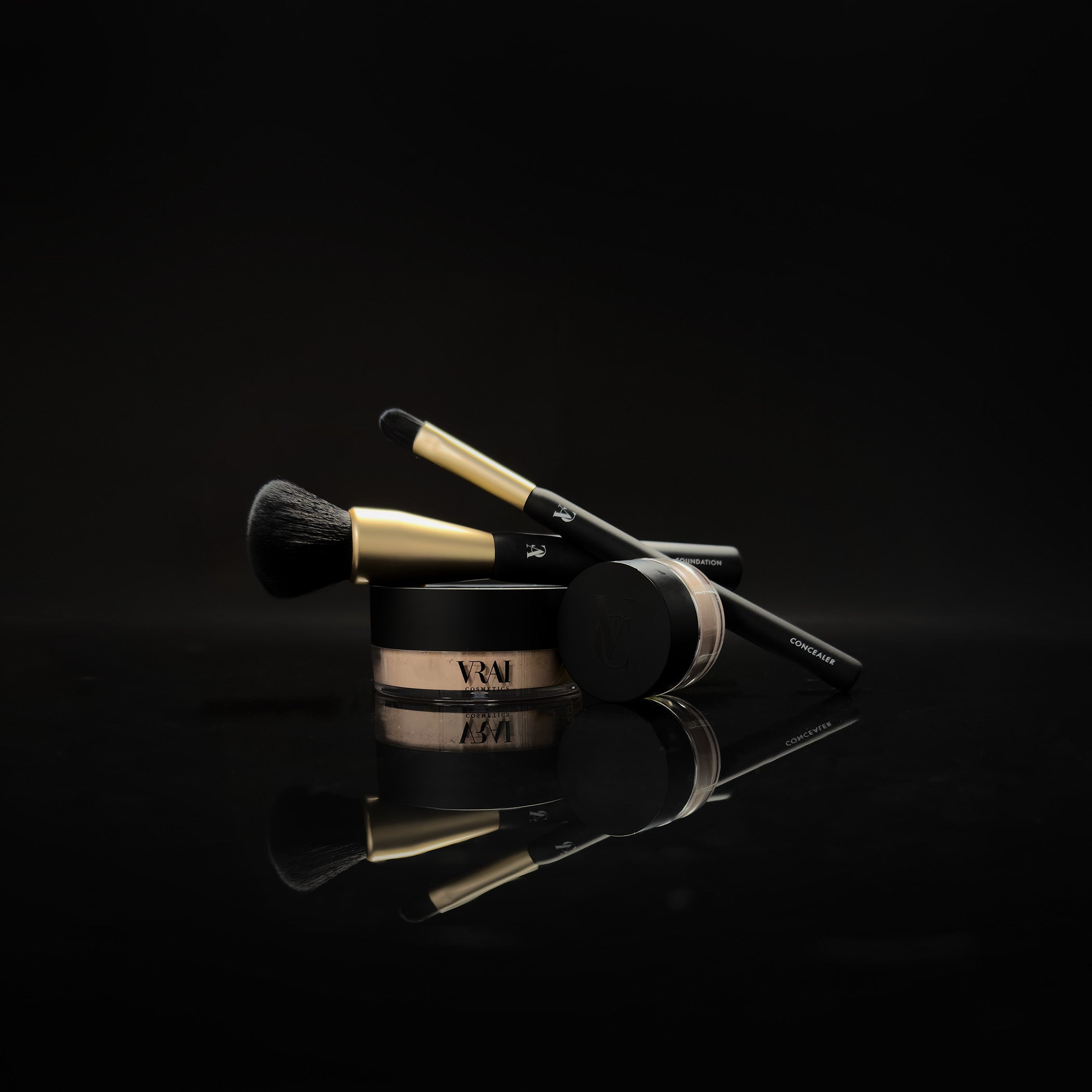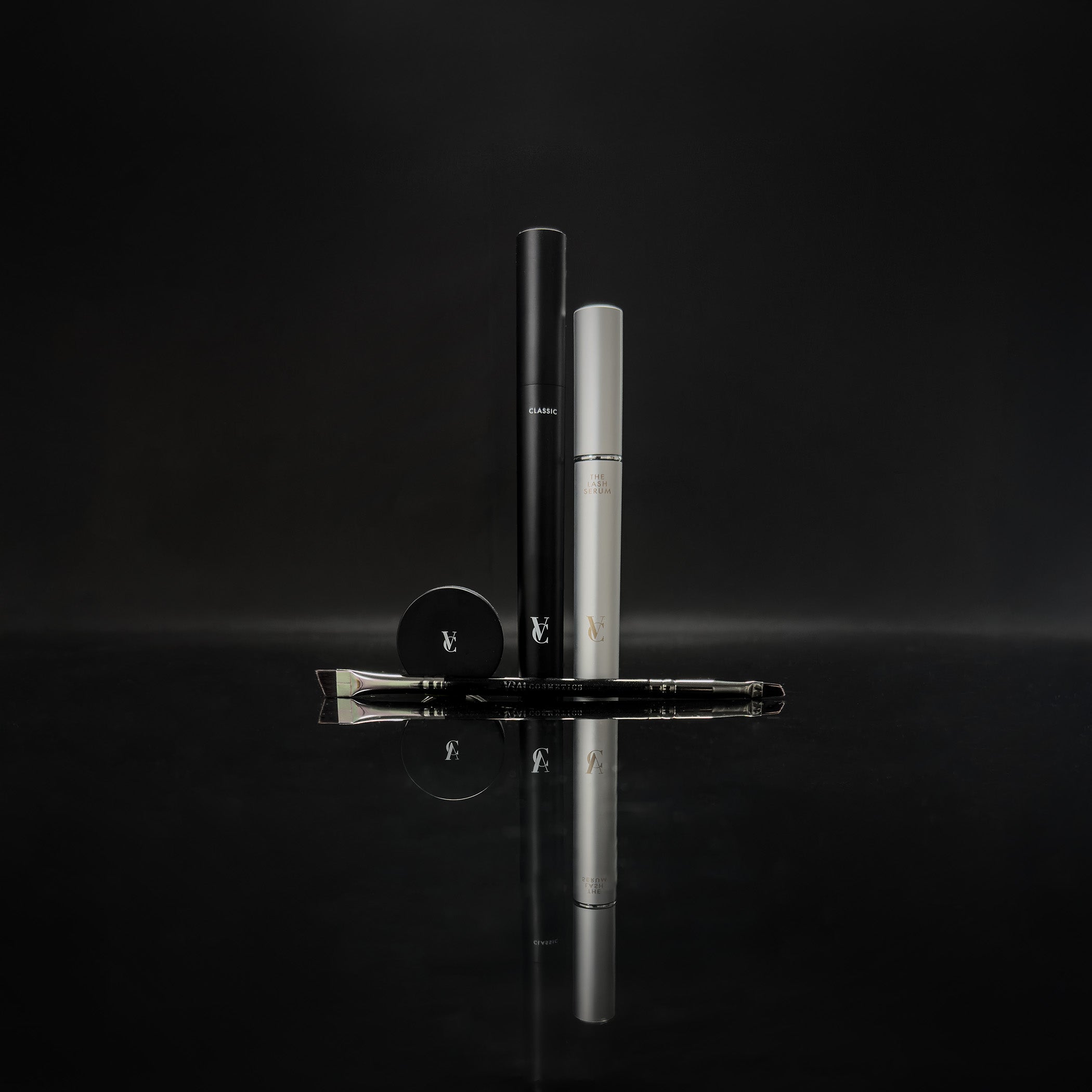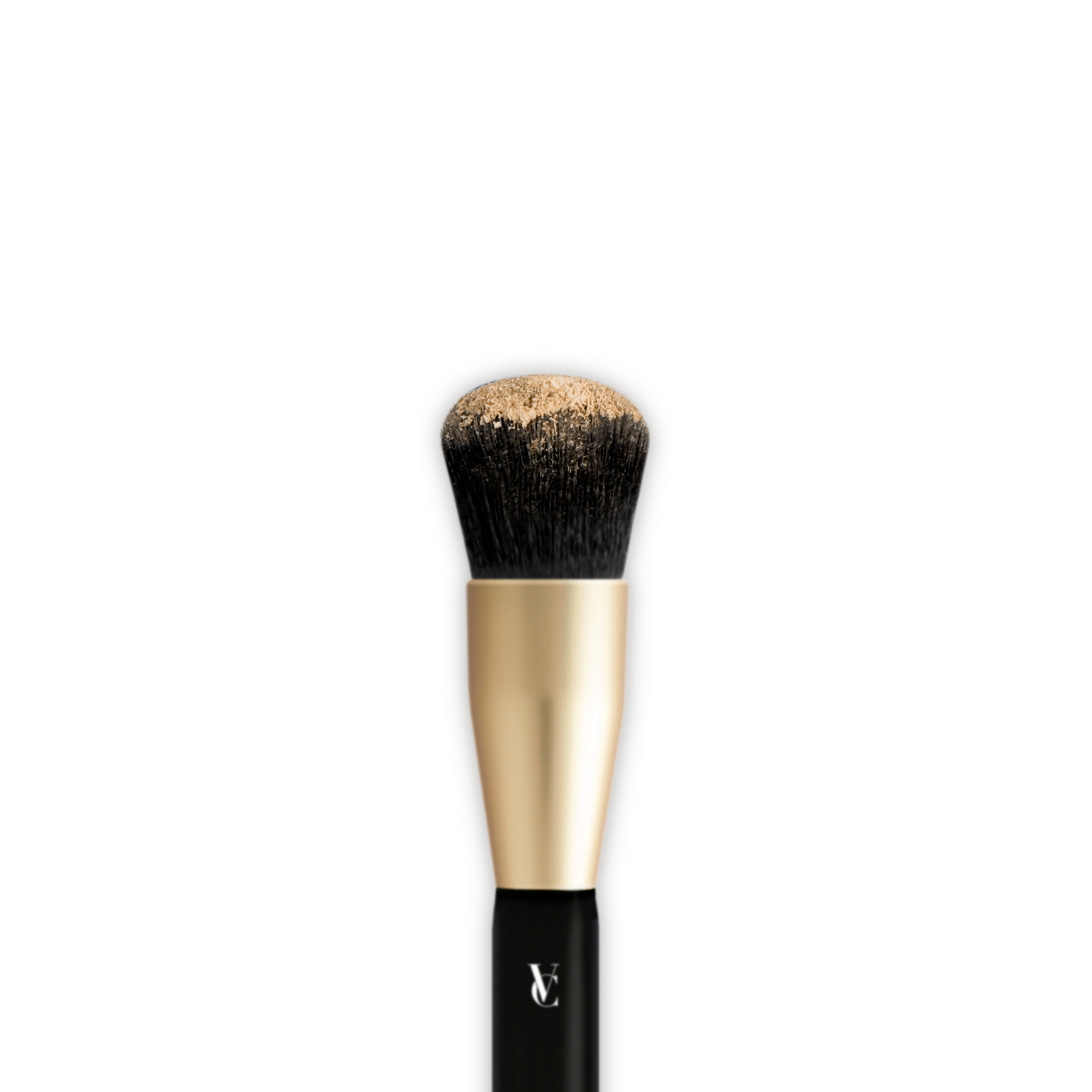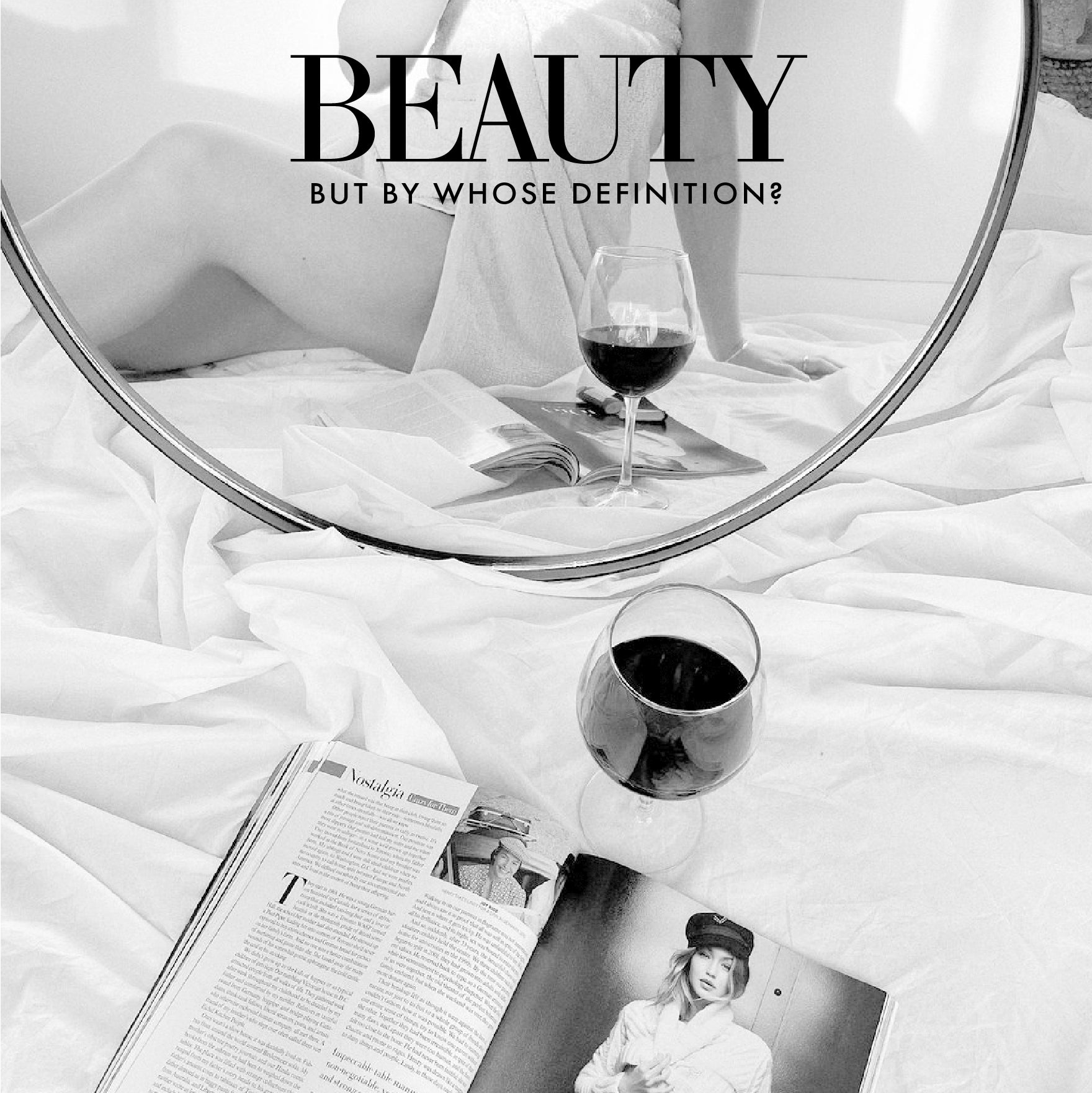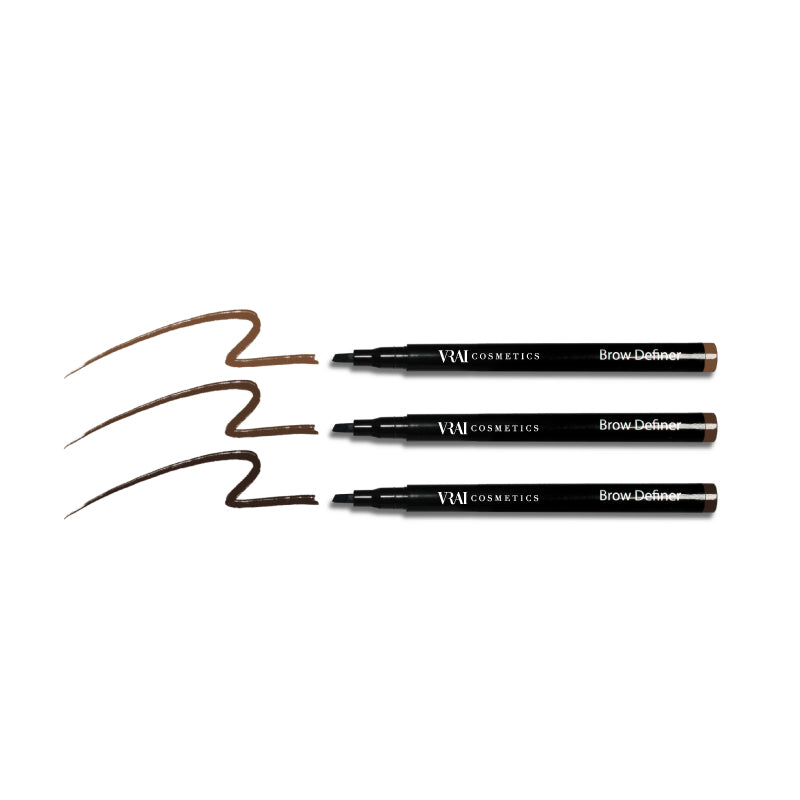
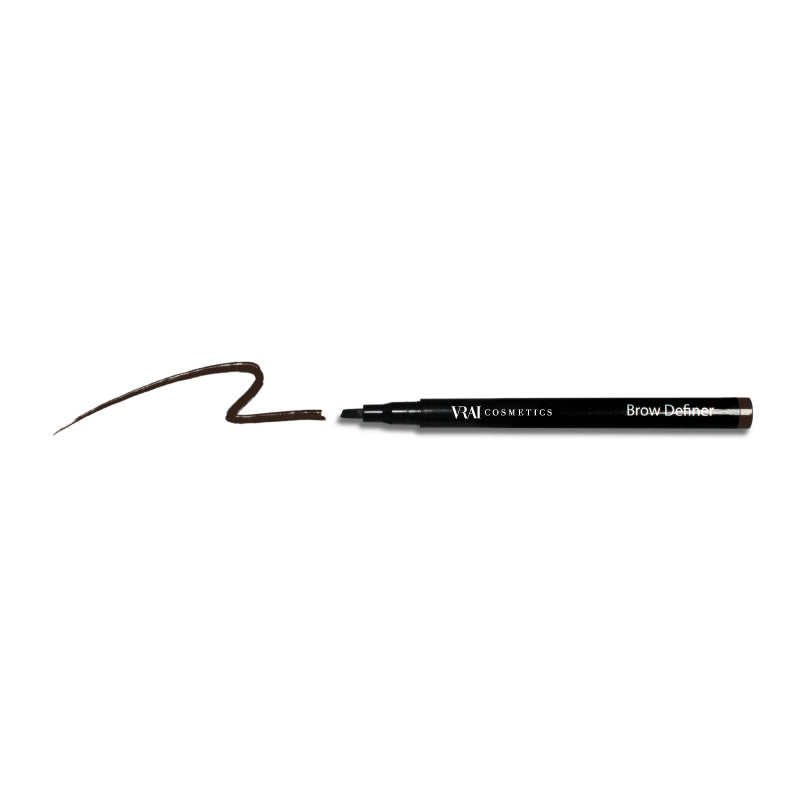
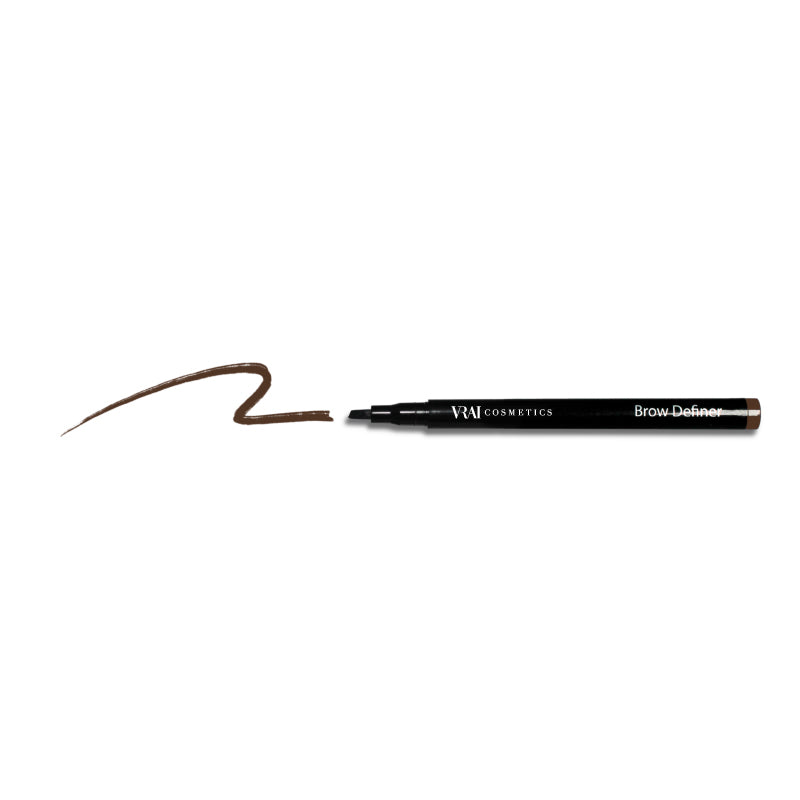
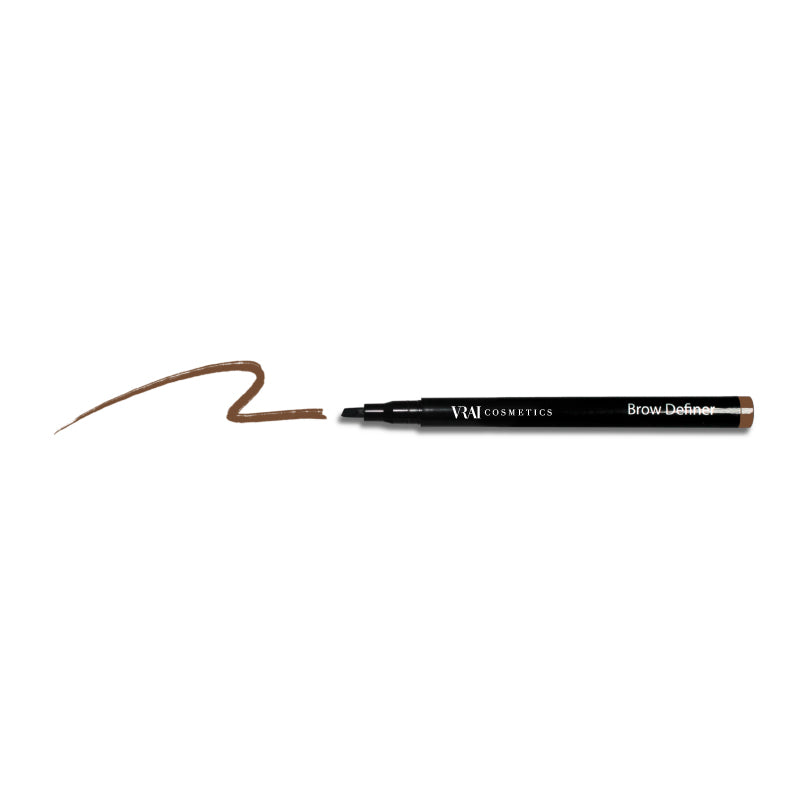

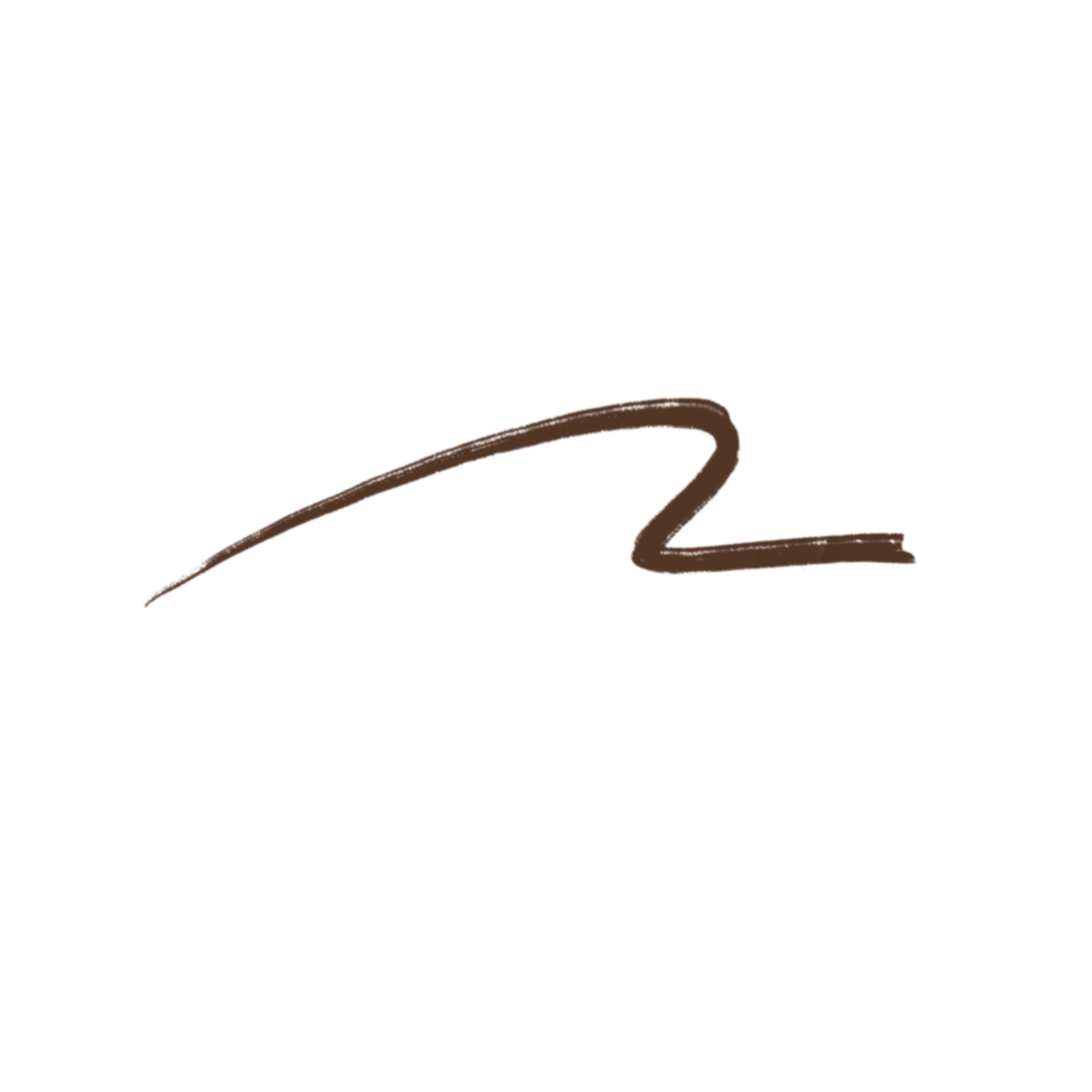
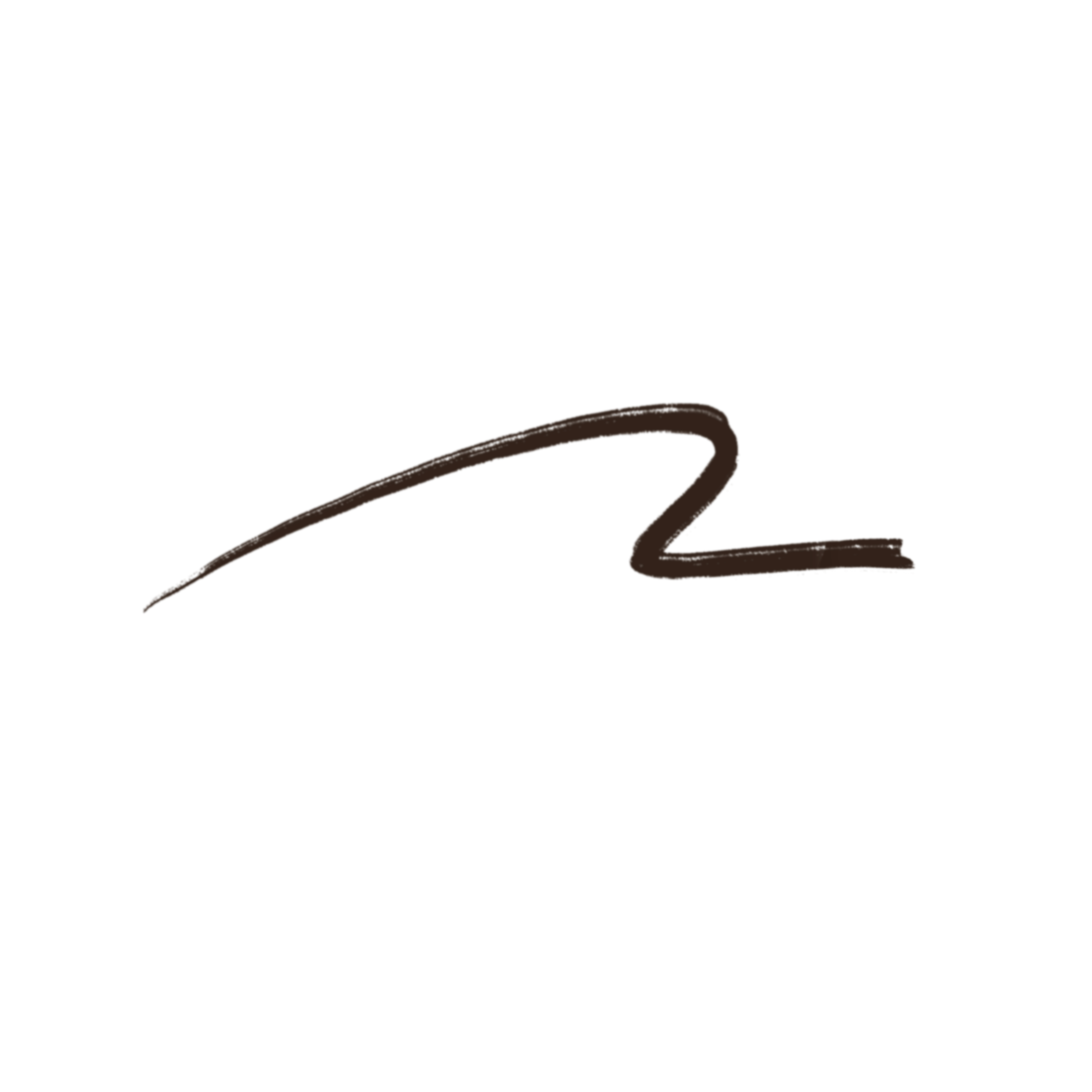
THE BROW DEFINER
This matte formula glides on easily, providing rich coverage and long-lasting wear.
1 ML | 0.03 FL OZ
Long Wearing
Non Fading
Angled Marker Tip
INGREDIENTS
BLONDE 62
Aqua (Water), Aloe Barbadensis (Aloe Vera) Leaf Juice, Polyurethane‐35, Polyglyceryl‐2 Caprate, Methylpropanediol, Glycerin, Butylene Glycol, Tri‐C12‐13 Alkyl Citrate, Phenoxyethanol,
Caprylyl Glycol, Panthenol, Stearic Acid, Palmitic Acid, Tocopherol, Phenylpropanol, Ethylhexylglycerin, Tetrasodium Glutamate Diacetate, Helianthus Annuus (Sunflower) Seed Oil, Citric Acid, Sodium Hydroxide,
Laureth‐21, PEG‐40 Hydrogenated Castor Oil, Sodium Dehydroacetate, CI 42090 (Blue 1), CI 77266 (Black 2) [Nano], CI 19140 (Yellow 5), CI 16035 (Red 40), CI 61570 (Green 5)
BRONDE 61
Aqua (water), Aloe Barbadensis (Aloe Vera) Leaf Juice, Polyurethane-35, Polyglyceryl-2 Caprate, Methylpropanediol, Glycerin, Butylene Glycol, Tri-C12-13 Alkyl Citrate, Phenoxyethanol, Caprylyl Glycol, Panthenol, Stearic Acid, Palmitic Acid, Tocopherol, Phenylpropanol, Ethylhexylglycerin, Tetrasodium Glutamate Diacetate Helianthus Annuus (Sunflower) Seed Oil, Citric Acid, Sodium Hydroxide, CI 19140 (Yellow 5), CI 16035 (Red 40), CI 61570 (Green 5), CI 42090 (Blue 1)
BRUNETTE 60
Aqua (Water), Aloe Barbadensis (Aloe Vera) Leaf Juice, Polyurethane-35, Polyglyceryl-2 Caprate, Methylpropanediol, Glycerin, Butylene Glycol, Tri-C12013 Alkyl Citrate, Phenoxyethanol, Caprylyl Glycol, Panthenol, Stearic Acid, Palmitic Acid, Tocopherol, Phenylpropanol, Ethylhexylglycerin, Tetrasodium Glutamate Diacetate, Helianthus Annuus (Sunflower) Seed Oil, Citric Acid, Sodium Hydroxide, CI 19140 (Yellow 5), CI 16035 (Red 40), CI 61570 (Green 5), CI 42090 (Blue 1)
Choose options







The Best Eyebrow Definer Tool
Hands-down the best eyebrow definer tool for anyone who wants to achieve beautifully shaped and defined brows with ease. Its precision, natural finish, and long-lasting formula make it a must-have for brow enthusiasts. Whether you're a makeup novice or a brow aficionado, this pencil will help you create flawless brows every time. Highly recommended for those who value both quality and performance.
Jenny
Easiest brow color ever
This is the easiest brow color I have ever used. It feels moisturizing. I love it!
Ladonna
My first experience with a brow definer...Life changing!
I am one to not wear a lot of makeup, however when I do I want it to be clean, apply quick and easily and stay on the entire day. The Brow Definer does all of it. I am very pleased with how quickly it can be applied and how drastic of a change it created of my entire look. I will definitely be purchasing more soon.
Amy
Super easy
I love the VRAI Brow Definer. So easy to use. I've used the two lighter colors and both are great. After applying I use a little brush to diffuse the color, which gives it a beautiful natural look. I've even used it as an eyeliner. Takes a few coats, but it's super easy.
Linda
Absolutely love this brow pen. It goes on with perfect little strokes. Would definitely buy again!
Tamara
INSIDE WITH PRODUCT
DESCRIPTION & DETAILS
Shape and fill long-lasting brows.
This matte formula glides on easily, providing rich coverage and long-lasting wear.
- With the application tip angled to compliment brow shape, gently press to create outline
- Using upward strokes, lightly sweep in the hair direction to define brow
- Gently brush brow hair and soften color by grooming with a brow spoolie
- Store pen facing downward to keep felt tip saturated with the formula
- When necessary, cleanse tip of definer by gently sweeping across a soft cloth moistened with fresh water
- Always ensure cap is tightly secure when not in use
INGREDIENT INTELLIGENCE
VRAI IQ
...
A skin conditioning ingredient that also functions as a humectant and film former. Primarily used for its soothing and skin-calming effects, it is able to attract and lock in hydration to help restore skin from environmental stressors. DERIVED FROM the leaves of the aloe vera plant.
WITHOUT EXCEPTIONS INGREDIENT
Polyurethane-35 is a skin forming polymer agent especially designed for UV products to effectively boost SPF and reduce skin stimulation. Reviewed by regulatory agencies worldwide, polyurethane-35 has been concluded safe for use in cosmetic formulations and has had no reported adverse effects associated with its proper use in cosmetic formulations. DERIVED FROM the polymerization of diisocyanate and polyol. Once the reaction of its components has taken place, the result is a polyurethane foam that is completely inert and harmless to humans.
WITH EXCEPTIONS INGREDIENT
66 polyurethane ingredients were reviewed by the Cosmetic Ingredient Review panel in total. Each polyurethane each carries unique properties, functions, and are individually created in their own process. Polyurethane-35 was found to have a slight irritation to skin when applied topically, and inhalation risk when in its raw form.
VRAI IQWhen formulated for cosmetic application in products that have minimal to no skin contact, skin irritation is unlikely and therefore can be used confidently. However, this ingredient should be carefully considered when used in formulations with significant coverage in a leave-on formula.
Polyglyceryl-2 Caprate (a fatty acid ester) is a multi-functional emulsifier that stabilizes dispersions. It helps prevent the separation of water and oil in a formulation and provides skin moisturizing properties as well. It creates a smooth application for topical formulations and has exhibited antimicrobial activity against gram positive bacteria. DERIVED FROM polyglycerin and a fatty acid.
WITHOUT EXCEPTIONS INGREDIENT
Methylpropanediol functions as a solvent in cosmetic formulations and can enhance the absorption of other ingredients for better penetration and efficacy. With its efficacy function, it acts as a preservative booster and shows to exhibit antimicrobial properties. It also works to attract and retain hydration in the skin and helps to improve skin barrier functions. DERIVED FROM synthesizing allyl alcohol with propylene oxide as the first part of a two step chemical reaction. It is then comprised of the hydrogenation of the n and iso intermediates to the corresponding diols. Prolonged direct application to skin can result in sensitivity over time. Use in products that have minimal to no skin contact show no irritation, with no adverse side effects.
WITH EXCEPTIONS INGREDIENT
Continued evaluation concludes this product is safe for use.
VRAI IQThis ingredient should be taken into consideration if using in formulations with significant skin coverage. When used in formulations with minimal to no skin contact, there have been no reported adverse effects for concern consideration.
Used to provide smooth application of product and help to lock in moisture and provide skin hydration when used topically. Also known to enhance skin texture, and soothe irritated skin. DERIVED FROM either animal or plant fats unless stated from vegetable.
WITHOUT EXCEPTIONS INGREDIENT
A colorless alcohol that functions as a conditioning agent to create a smooth skin texture while raising the water content in skin to leave the feeling and look of proper hydration. DERIVED FROM various forms including distilled fossil fuel, sugarcane or distilled corn.
WITHOUT EXCEPTIONS INGREDIENT
Unfounded controversy remains around fossil fuels being petroleum-derived. Through the natural decomposition process over millions of years, through layers of the earth, extracted fossil fuels are distilled and separated into their individual compounds. Butylene Glycol is a 1,3 butanediol. When used in cosmetic formulations, it is found to be safe and is rare to cause a skin reaction. Through various and repeated testing, this ingredient has proved to show no known toxicity to humans when used in its proper supported use in skincare and cosmetic preparations.
Used as a stabilizer in creams and lotions of the oil-in-water type to help increase viscosity and emulsion stability. DERIVED FROM citric acid.
WITHOUT EXCEPTIONS INGREDIENT
Phenoxyethanol is used as a preservative and stabilizer and carries a faint rose scent. Decades of research and safety assessments have allowed experts worldwide to conclude it is safe for use in cosmetic products in both leave-on, and rinse-off formulations. Phenoxyethanol was first introduced in 1950 and is among the most highly effective preservatives for protecting formulas from broad-spectrum pathogenic activity. Phenoxyethanol is synthetically produced for commercial use but is found naturally in green tea which is often used to preserve products listed as "natural" and is approved for use by the EU standard in formulations with a maximum concentration of 1%. The FDA currently does not carry a regulated standard for concentration use. DERIVED FROM: treating phenol with ethylene oxide in an alkaline medium. It is also found naturally in green tea, and plants such as chicory.
WITH EXCEPTIONS INGREDIENT controversy remains strong over the use of phenoxyethanol and when exposed to its pure form in 100% concentration, has been shown to affect the central nervous system. (NOTE: cosmetic formulations use 1% or less.) Due to risk of potential concern, it is best to avoid this ingredient for products that will have significant skin contact. Use in hair formulations that will not contact the scalp, or in brow applications which are applied to the brow hair making minimal to no skin contact, or in mascaras when applied only to the lash, carry little to no concern as these applications are making no, to minimal contact with the skin. Lashes and hair do not have the ability to absorb what is applied, and carry it into the tissues or blood stream.
VRAI IQIn conclusion, a best practice would be to avoid this ingredient in products with significant skin contact, and use confidently in products with little to no skin contact, as phenoxyethanol does prove to be the safest among preservatives, ensuring the formulation remains safe to use and can pass safety testing as well as ocular testing in products.
Helps to attract water to the topmost layer of the skin for hydration. Also used as a preservative. DERIVED FROM palm and coconut oils.
WITHOUT EXCEPTIONS INGREDIENT
Though glycols are a topic of discussion in community forums, there is no reported evidence showing toxicity to humans when used in its proper supported use in skincare and cosmetic preparations.
When used in topical formulations, it conditions and soothes skin and helps to build a barrier against irritation and helps to lock in hydration. DERIVED FROM vitamin B5, also known as pantothenic acid.
WITHOUT EXCEPTIONS INGREDIENT
Stearic acid functions as an emollient, emulsifier, and lubricant to help soften and moisturize skin. It is a long-chain fatty acid occuring naturally in a variety of sources such as coconut oil and shea butter. When used in high concentrations it can cause skin irritation to those with sensitive or easily irritated skin. DERIVED FROM the hydrolysis of common vegetable and animal oils and fats.
WITHOUT EXCEPTIONS INGREDIENT
Palmitic Acid is a fatty acid used in cosmetics as an emollient to help keep skin smooth and mask the appearance of blemishes. DERIVED FROM palm oil, which is derived from the palm fruit.
WITHOUT EXCEPTIONS INGREDIENT
Tocopherol (Vitamin E) is an important fat-soluble vitamin with antioxidant properties that has been shown to help protect skin from ultraviolet rays by neutralizing free radicals. DERIVED FROM naturally from a variety of vegetable oils and fats.
WITHOUT EXCEPTIONS INGREDIENT
Phenylpropanol is primarily used as a preservative, and since it carries a soft floral aromatic (similar to hyacinth) it is often used in formulations to add a scent, or to mask the aromas of unpleasant compounds used. It can be either naturally or synthetically derived. Phenyl (Phenol) is from a group of aromatic chemicals (hydrocarbon residue) also found in cinnamon, clove, thyme, cassia, and oregano, which when applied topically has in some cases caused contact sensitization. For this reason, phenylpropanol can be irritating to sensitive skin when used in formulations with high concentrations although generally it is used in concentrations less than 1% and unlikely to cause a reaction. DERIVED FROM flowers and fruits such as hyacinth, narcissus, and ripe strawberries; then extracted via the reaction of propenyl benzene and hydrochloric acid in the presence of a base like sodium hydroxide to create hydrocarbon residue.
WITHOUT EXCEPTIONS INGREDIENT
Used as a mild preservative in place of parabens, this ingredient also functions as a conditioning agent, and boosts hydration. DERIVED FROM the extraction of biodegradable glycerin from soybean or palm oil.
WITH EXCEPTIONS INGREDIENT
When used in topical applications at a formulation rate of 8% or higher, this ingredient has been known to cause skin irritation. When used in a formulation such as mascara, and in concentrations less than 1%, no irritation was noted.
VRAI IQThis ingredient is being used in a product that does not have significant skin coverage. Mascara is applied to the lash hairs, which do not absorb into the blood stream or result in significant skin contact. Use of products with this ingredient in leave-on formulations, or when there is significant skin coverage may warrant further consideration.
A vegetable-based chelating agent used to enhance the effects of preservatives in a formulation (allowing for the use of lower amounts) and helps to reduce the surface tension of water. DERIVED FROM glutamic acid (amino acid). Once synthesized, it produces the organic salt tetrasodium glutamate diacetate.
WITHOUT EXCEPTIONS INGREDIENT
Helps to maintain hydration by forming a medium weight barrier on the skin. Rich in fatty acids and vitamin E when used topically, it helps to boost natural ceramides in skin, making it an ideal moisturizer with a light viscosity. DERIVED FROM seeds of the sunflower.
WITHOUT EXCEPTIONS INGREDIENT
A protective antioxidant to help reverse visible signs of photo-damage by adjusting the surface pH. DERIVED FROM fruit.
WITHOUT EXCEPTIONS INGREDIENT
Sodium Hydroxide is used to help establish and hold the pH of a product in an acidic or alkaline formula. As a raw material, sodium hydroxide is incredibly harmful; however, due to concentration regulations, testing has been deemed safe for use in cosmetics at concentrations of 1% or less. DERIVED FROM the electrolytic chloralkali (also referred to as caustic soda or lye).
WITH EXCEPTIONS INGREDIENT
When used in high concentrations, consideration should be given as to the formula application in leave-on products. When used in raw form (for soap making) extreme caution should be given.
VRAI IQUse careful consideration in leave-on products that will have significant skin coverage, as opposed to rinse-off products such as soaps. When used on hair, there is minimal risk as the hair cannot absorb and transfer into the skin or blood stream.
Laureth-21 ingredients are used as surfactants to cleanse, emulsify, and thicken formulations. Used topically, surfactants such as Laureth-21 can cause minor skin irritation. The Independent Cosmetics Ingredient Review panel has concluded that Laureth ingredients are safe when formulated to be non-irritating or having minimal to no skin contact. Developmental and reproductive toxicity studies as well as mutagenicity data were all negative for these compounds. DERIVED FROM the reaction of combining ethylene oxide with lauryl alcohol.
WITH EXCEPTIONS INGREDIENT
Small amounts of 1,4 dioxane, a byproduct of ethoxylation, may be found in the Laureth ingredients. When Laureth is used for cosmetic applications, it undergoes a purification process to control the potential presence of 1,4 dioxane, ensuring it is removed before blending into cosmetic formulations.
VRAI IQWhen used in a formula such as mascara or similar products that have minimal to no skin contact, the risk for such irritation is rare and unlikely. Products applied to hair or lashes with no skin contact do not absorb into the skin tissue or blood stream.
PEG-40 Hydrogenated Castor Oil is a chemically modified version of castor oil considered non-sensitizing and safe for use in cosmetics with identified concentrations up to 22% of formula. This ingredient serves as an emollient to ensure consistency in texture and viscosity. It functions as a humectant and is occlusive, making it a skin conditioning agent as well. PEG 40 Castor Oil is rich in triglycerides and fatty acids like oleic acid, ricinoleic acid, and linoleic acid. DERIVED FROM castor oil.
WITH EXCEPTIONS INGREDIENT
Small amounts of 1,4 dioxane, a by-product of PEG (polyethalene glycol derived from polymerizing ethylene oxide) may be found residually in PEG derivatives. When PEG's are used for cosmetic applications, it undergoes a purification process to control the potential presence of 1,4 dioxane to ensure it is removed before blending into cosmetic formulations.
VRAI IQWhen there is no significant exposure to the skin, the risk, even if trace amounts remained present after the purification process, would pose no risk, especially in applications where the formula is limited to hair or lashes, and no skin contact is made.
Sodium Dehydroacetate is an anti-microbial agent used in cosmetics as a preservative. The Cosmetic Ingredient Review panel has concluded it to be safe for use in cosmetic formulations when used in its proper use form and concentrations. DERIVED FROM the sodium salt of Dehydroacetic Acid.
WITHOUT EXCEPTIONS INGREDIENT
A compound of iron and oxygen, Iron Oxides are cosmetic pigments used to add color without the use of dyes, and to help protect the skin from visible light. DERIVED FROM natural minerals.
WITHOUT EXCEPTIONS INGREDIENT
Controversy over the use of Iron Oxides and mica minerals remain due to concern when exposed to iron oxides in their raw form during the mining process, as direct inhalation of raw materials can cause distress to the respiratory system.
VRAI IQIf you have found yourself in the unfavorable situation of having forgot your miner’s mask while mining for iron oxides, it would do you well to leave the mining site and take pause for concern. When used in cosmetic formulations, iron oxides have been proven to be non-comedogenic, non-toxic, non-allergenic, and repeatedly were shown to have no known adverse health effects.
A compound of iron and oxygen, Iron Oxides are cosmetic pigments used to add color without the use of dyes, and to help protect the skin from visible light. DERIVED FROM natural minerals.
WITHOUT EXCEPTIONS INGREDIENT
Controversy over the use of Iron Oxides and mica minerals remain due to concern when exposed to iron oxides in their raw form during the mining process, as direct inhalation of raw materials can cause distress to the respiratory system.
VRAI IQIf you have found yourself in the unfavorable situation of having forgot your miner’s mask while mining for iron oxides, it would do you well to leave the mining site and take pause for concern. When used in cosmetic formulations, iron oxides have been proven to be non-comedogenic, non-toxic, non-allergenic, and repeatedly were shown to have no known adverse health effects.
A compound of iron and oxygen, Iron Oxides are cosmetic pigments used to add color without the use of dyes, and to help protect the skin from visible light. DERIVED FROM natural minerals.
WITHOUT EXCEPTIONS INGREDIENT
Controversy over the use of Iron Oxides and mica minerals remain due to concern when exposed to iron oxides in their raw form during the mining process, as direct inhalation of raw materials can cause distress to the respiratory system.
VRAI IQIf you have found yourself in the unfavorable situation of having forgot your miner’s mask while mining for iron oxides, it would do you well to leave the mining site and take pause for concern. When used in cosmetic formulations, iron oxides have been proven to be non-comedogenic, non-toxic, non-allergenic, and repeatedly were shown to have no known adverse health effects.
A compound of iron and oxygen, Iron Oxides are cosmetic pigments used to add color without the use of dyes, and to help protect the skin from visible light. DERIVED FROM natural minerals.
WITHOUT EXCEPTIONS INGREDIENT
Controversy over the use of Iron Oxides and mica minerals remain due to concern when exposed to iron oxides in their raw form during the mining process, as direct inhalation of raw materials can cause distress to the respiratory system.
VRAI IQIf you have found yourself in the unfavorable situation of having forgot your miner’s mask while mining for iron oxides, it would do you well to leave the mining site and take pause for concern. When used in cosmetic formulations, iron oxides have been proven to be non-comedogenic, non-toxic, non-allergenic, and repeatedly were shown to have no known adverse health effects.
A compound of iron and oxygen, Iron Oxides are cosmetic pigments used to add color without the use of dyes, and to help protect the skin from visible light. DERIVED FROM natural minerals.
WITHOUT EXCEPTIONS INGREDIENT
Controversy over the use of Iron Oxides and mica minerals remain due to concern when exposed to iron oxides in their raw form during the mining process, as direct inhalation of raw materials can cause distress to the respiratory system.
VRAI IQIf you have found yourself in the unfavorable situation of having forgot your miner’s mask while mining for iron oxides, it would do you well to leave the mining site and take pause for concern. When used in cosmetic formulations, iron oxides have been proven to be non-comedogenic, non-toxic, non-allergenic, and repeatedly were shown to have no known adverse health effects.
A compound of iron and oxygen, Iron Oxides are cosmetic pigments used to add color without the use of dyes, and to help protect the skin from visible light. DERIVED FROM natural minerals.
WITHOUT EXCEPTIONS INGREDIENT
Controversy over the use of Iron Oxides and mica minerals remain due to concern when exposed to iron oxides in their raw form during the mining process, as direct inhalation of raw materials can cause distress to the respiratory system.
VRAI IQIf you have found yourself in the unfavorable situation of having forgot your miner’s mask while mining for iron oxides, it would do you well to leave the mining site and take pause for concern. When used in cosmetic formulations, iron oxides have been proven to be non-comedogenic, non-toxic, non-allergenic, and repeatedly were shown to have no known adverse health effects.



